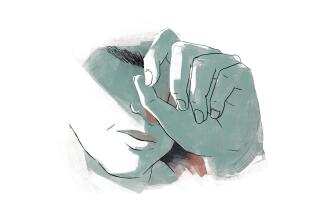U.S. suicides have soared since 1999, CDC report says

Among men and women alike, suicide rates surged between 1999 and 2014, a new study finds.
Driven by stark increases in the numbers of white women and Native Americans who are taking their own lives, suicide rates in the United States jumped 24% in the years between 1999 and 2014, a new government report says.
Following a slow-but-steady rise in suicides from 1999, the yearly increase accelerated after 2006, as Americans’ financial woes mounted and a battering recession settled in. Between 2006 and 2014, the report shows, the annual rise in the U.S. suicide rate jumped from 1% to 2%. Suicide rates climbed among men and women, and in all age groups between 10 and 74 years old.
Suicide rates among non-Latino American Indians and Alaska Natives were, in 1999, already the highest of any ethnic group, despite being widely underreported. By 2014, roughly 1 in 2,000 men in this ethnic group committed suicide, a 60% increase over the suicide rate among male American Indians and Alaska Natives that prevailed in 1999.
Among all men under 75, suicides surged. In the age group most prone to suicide -- 45 to 64 -- almost 30 in 100,000 men took their lives in 2014, a 43% increase over 1999’s rate. Non-Latino black males were the only racial or ethnic group of either gender to have a lower suicide rate in 2014 than in 1999.
------------
FOR THE RECORD
April 25: A previous version of this story incorrectly said the 2014 suicide rate for men beween the ages of 45 and 64 was almost 30 per 1,000.
------------
All told, 42,773 Americans died of suicide in 2014, according to the Centers for Disease Control and Prevention. That made suicide the 10th leading cause of death for all ages.
“This is definitely harrowing: The overall massiveness of the increase is to me the biggest shocker--the fact that it touched pretty much every group,” said Katherine A. Hempstead, who recently published an analysis of U.S. suicide trends in the American Journal of Preventive Medicine.
Hempstead, director of the Robert Wood Johnson Foundation, noted that the surging suicide rate among women--a group that has traditionally committed suicide at a far lower rate than men--was especially significant. Though nearly four times as many men as women kill themselves, suicide rates among women grew much faster than those among men.
“That we’ve started to see the gender gap close is shocking,” said Hempstead, who was not involved in the current study.
Among all women younger than 75, suicide rates grew across the age spectrum. But in the age group of greatest vulnerability--women between 45 and 64--the rate of suicide in 2014 vaulted 80% over 1999’s rates.
Among girls 5 to 15 years old--a segment of the population among whom suicide was a rare phenomenon in 1999--rates of suicide tripled between 1999 and 2014, with one suicide yearly for every 6,660 of these girls.
Hempstead’s earlier published study of American suicide rates ended with 2010, and had documented a steep rise that appeared strongly related to financial distress and job problems. That that trend continued for four more years may reflect that “the benefits of the recovery have not been shared by all,” said Hempstead. Recent reports that nonlethal forms self-harm--drug overdoses and alcohol-related diseases--have begun to erode Americans’ life expectancy also underscore the lingering effects of economic hardship on many, she added.
The new report, issued Thursday by the CDC’s Center for Health Statistics, also offers a grim look into the changing means by which American suicide victims took their lives. Among both men and women, the 1999-2014 period saw a shift away from the use of firearms, pills and poisons. In 2014, 1 in 4 suicides was by suffocation (hanging, strangulation or suffocation), up from 1 in 5 in 1999.
Firearms continued to be the preferred means of suicide by male victims, occurring in 55.4% of the cases in 2014. Among women, firearms followed close behind poisoning as a favored means of suicide, accounting for 31% of female suicides in 2014.
These facts underscore the importance of coaxing from those in crisis the pills, poison or guns they might use to carry out a suicide, said Catherine Barber, director of the Means Matter Campaign at Harvard’s School of Public Health.
Research suggests that many who attempt suicide act on impulse--and when a gun is available, their attempts are vastly more likely to succeed. By contrast, 9 out of 10 people who attempt suicide and survive will not go on to die by their own hand, suggesting that removing the means to commit such an act is not a gesture doomed to fail.
“Often, the moment for a friend to intervene is related to a crisis that is going to resolve, like a divorce,” said Barber. “A friend can offer optimism: ‘We’ll get through this,’” said Barber. “A friendly way of showing concern” would be to offer to hold a distressed person’s firearms until the crisis has passed, she added.
Follow me on Twitter @LATMelissaHealy and “like” Los Angeles Times Science & Health on Facebook.
ALSO
Prince, master of rock, soul, pop and funk, dies at 57
16-year-old girl dead after fight in high school bathroom, police say
Days before her death, wrestling star Chyna posted a rambling YouTube video







